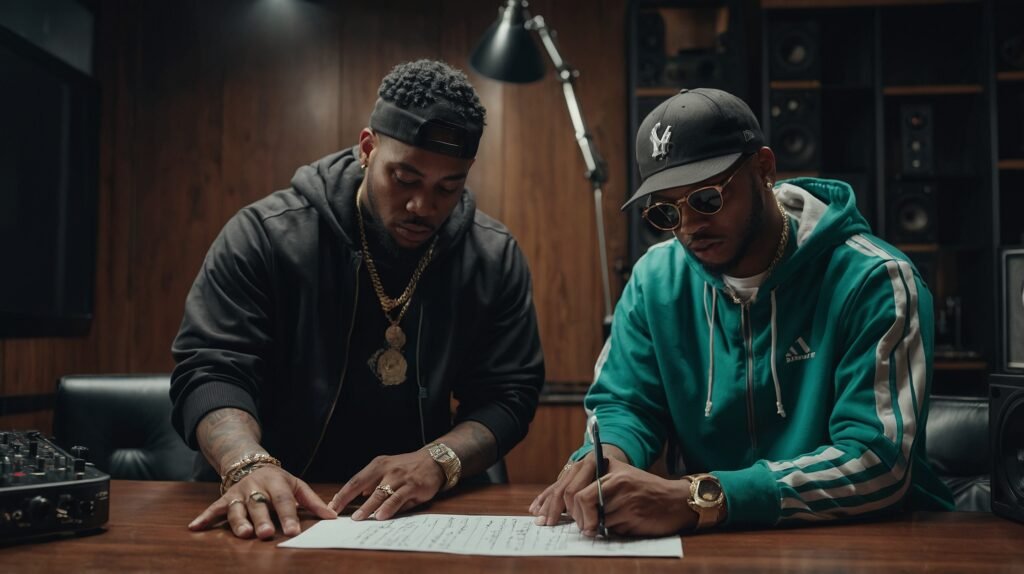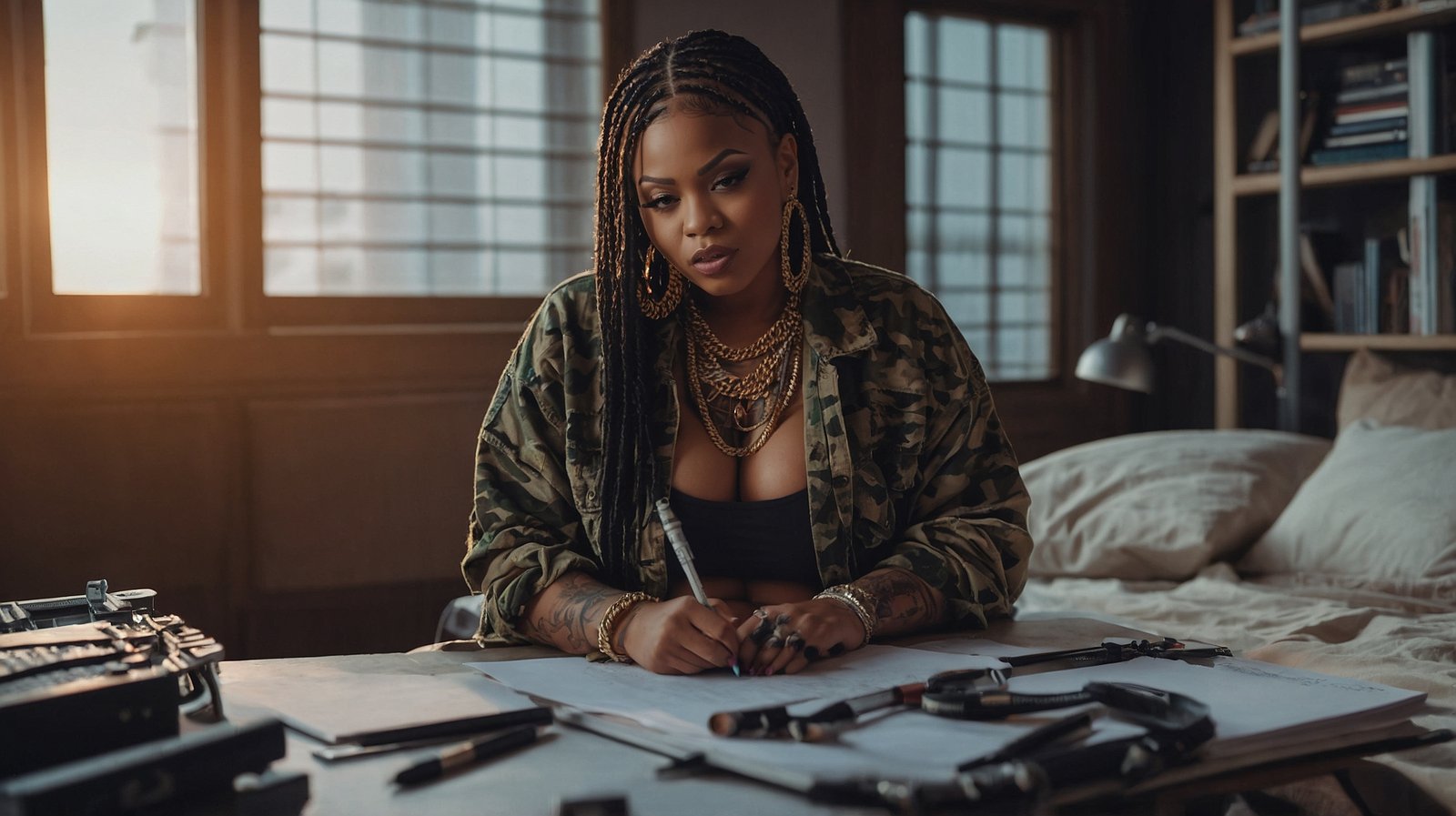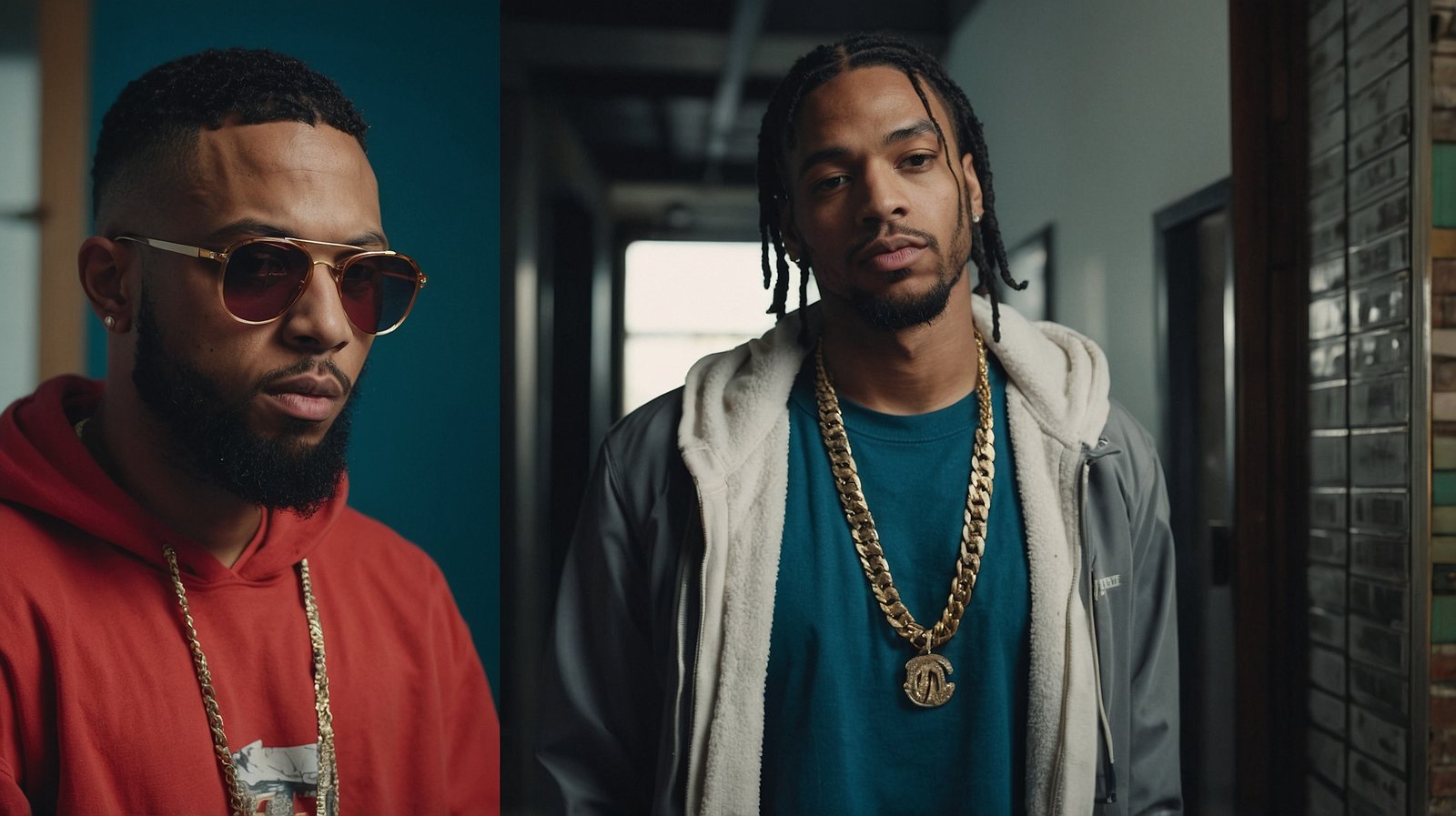When an artist buys a beat, the financial and legal split between the artist and producer is often misunderstood. Whether you’re working with a Standard (Non-Exclusive) License or an Exclusive License, knowing how money is divided will help you avoid legal issues, maximize profits, and make smarter business decisions.
This guide will break down the exact splits for each license type, covering:
✔️ Mechanical Royalties (sales & streams)
✔️ Performance Royalties (radio, live shows, PROs like ASCAP/BMI)
✔️ Publishing Rights (songwriting & composition)
✔️ Content ID & YouTube Monetization
✔️ Sync Licensing (TV, film, and commercial placements)
Let’s dive in and demystify beat licensing splits once and for all. 🚀🔥
Understanding Royalties & Rights in Music Licensing 🎧
Before we break down the splits, let’s clarify what’s being split when a song is monetized:
1. Master Recording vs. Composition Rights
When you buy a beat, there are two major rights involved:
- 🎵 The Composition (Publishing Rights) – The underlying melody, chords, and beat (owned by the producer).
- 📀 The Master Recording – The final recorded song (owned by the artist).
2. Types of Music Royalties
Here’s where money comes in:
✅ Mechanical Royalties – Earnings from streaming, physical & digital sales (Spotify, Apple Music, iTunes, CDs, vinyl).
✅ Performance Royalties – Money collected from radio play, live performances, and music licensing (through PROs like ASCAP, BMI).
✅ Publishing Royalties – Earnings from songwriting and composition (split between artist and producer).
✅ Sync Licensing – Payments when a song is used in TV, film, ads, or video games.
✅ YouTube & Content ID Revenue – Earnings from monetized video streams on YouTube.
Now, let’s break down how these earnings are split between the artist and producer based on the license type.
Splits for a Standard (Non-Exclusive) License 🎟️
A Standard License is the most affordable option, but it limits the artist’s control over the beat. The producer retains ownership and continues to license the beat to other artists.
1. Master Recording Ownership
✅ The artist owns 100% of the master recording (vocals + beat together).
✅ The producer still owns the beat itself.
✅ Other artists can buy the same beat and use it in their own songs.
2. Mechanical Royalties (Streams & Sales) 💰
✅ Artist keeps 100% of streaming revenue & digital/physical sales.
❌ Producer does NOT collect mechanical royalties (since it’s a non-exclusive deal).
📌 Example: If an artist sells 50,000 copies or gets 1M streams, they keep all the earnings.
3. Performance Royalties (ASCAP, BMI, SESAC) 🎤
✅ Artist collects 100% of their share from their Performing Rights Organization (PRO).
✅ Producer is NOT entitled to a share of performance royalties.
4. Publishing & Songwriting Rights 📝
✅ Artist owns 100% of publishing & songwriting rights.
✅ Producer does NOT get publishing royalties (since it’s non-exclusive).
📌 Example: If the song earns $10,000 in publishing royalties, the artist keeps all of it.
5. YouTube & Content ID Revenue 📺
❌ Artist CANNOT register the song with YouTube Content ID (since other artists also have the beat).
✅ Artist can monetize their music video, but not the beat itself.
6. Sync Licensing (TV, Film, Ads) 🎬
❌ Artist cannot license the beat for commercial sync placements.
✅ Artist can use it in YouTube videos, but not in major TV/film productions.
Bottom Line: What’s the Artist-Producer Split?
| Revenue Type | Artist’s Share | Producer’s Share |
|---|---|---|
| Master Recording | ✅ 100% | ❌ 0% |
| Streaming & Sales (Mechanical Royalties) | ✅ 100% | ❌ 0% |
| Performance Royalties (ASCAP, BMI, etc.) | ✅ 100% | ❌ 0% |
| Publishing & Songwriting | ✅ 100% | ❌ 0% |
| YouTube Monetization | ✅ Yes (but no Content ID) | ❌ 0% |
| Sync Licensing (TV, Film, Ads) | ❌ No | ❌ No |
🔑 Key Takeaway: The artist keeps 100% of earnings, but has limitations on ownership, sync licensing, and YouTube monetization.
Splits for an Exclusive License 🏆
An Exclusive License gives the artist full control over the beat, meaning no one else can use it after purchase. This also means the producer gets a share of royalties in return.
1. Master Recording Ownership
✅ Artist owns 100% of the master recording.
❌ Producer no longer sells the beat to anyone else.
2. Mechanical Royalties (Streams & Sales) 💰
✅ Artist keeps 90% of streaming, sales, and digital downloads.
✅ Producer gets 10% of all mechanical royalties.
📌 Example: If the song earns $50,000 from streams and sales, the producer receives $5,000.
3. Performance Royalties (ASCAP, BMI, SESAC) 🎤
✅ Artist collects 50% of the songwriter royalties.
✅ Producer collects 50% of the songwriter royalties.
📌 Example: If ASCAP pays out $10,000 in songwriter royalties, the producer gets $5,000.
4. Publishing & Songwriting Rights 📝
✅ Artist keeps 50% of publishing.
✅ Producer gets 50% of publishing.
📌 Example: If the song generates $20,000 in publishing royalties, the producer earns $10,000.
5. YouTube & Content ID Revenue 📺
✅ Artist can register the song with YouTube Content ID (and block unauthorized uploads).
✅ Both artist and producer can collect monetization revenue.
6. Sync Licensing (TV, Film, Ads) 🎬
✅ Artist can license the song for TV, film, and commercial use.
✅ Producer gets a negotiated % of the sync fee.
📌 Example: If a commercial pays $50,000 for sync rights, the producer might receive $10,000–$25,000.
Bottom Line: What’s the Artist-Producer Split?
| Revenue Type | Artist’s Share | Producer’s Share |
|---|---|---|
| Master Recording | ✅ 100% | ❌ 0% |
| Streaming & Sales (Mechanical Royalties) | ✅ 90% | ✅ 10% |
| Performance Royalties (ASCAP, BMI, etc.) | ✅ 50% | ✅ 50% |
| Publishing & Songwriting | ✅ 50% | ✅ 50% |
| YouTube Monetization | ✅ Yes (with Content ID) | ✅ Partial |
| Sync Licensing (TV, Film, Ads) | ✅ Yes | ✅ Negotiated % |
🔑 Key Takeaway: The artist gets full control, but shares revenue with the producer—a fair trade-off for exclusive ownership.
Final Thoughts: Understanding Your Earnings 🎧💰
✅ Standard License = No revenue splits, but limited rights.
✅ Exclusive License = Full control, but shared royalties with the producer.
If you’re serious about your music career, knowing these splits helps you plan financially, avoid legal issues, and maximize your profits.
🔥 Ready to secure your next hit? Browse beats and choose the right license today! 🎶🚀



